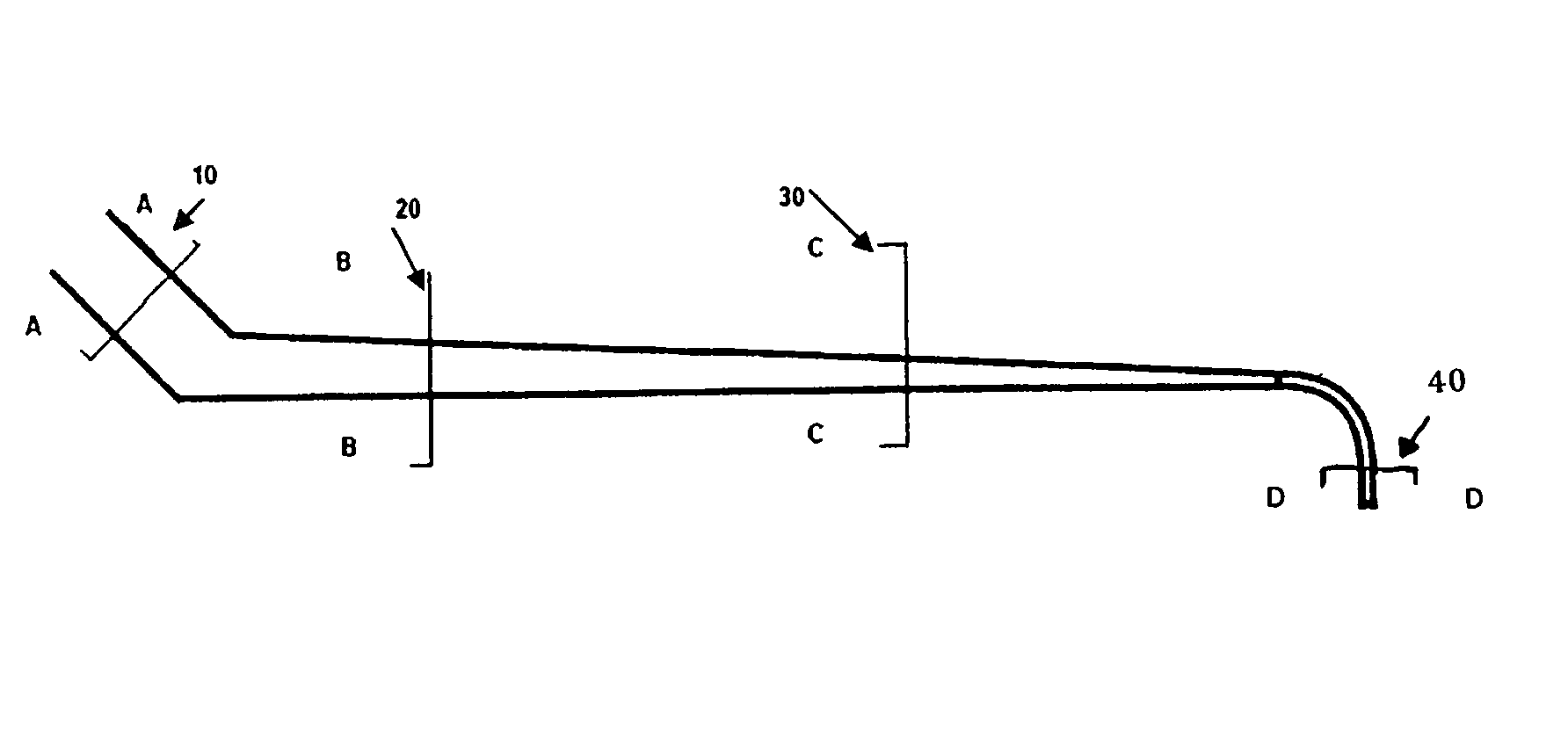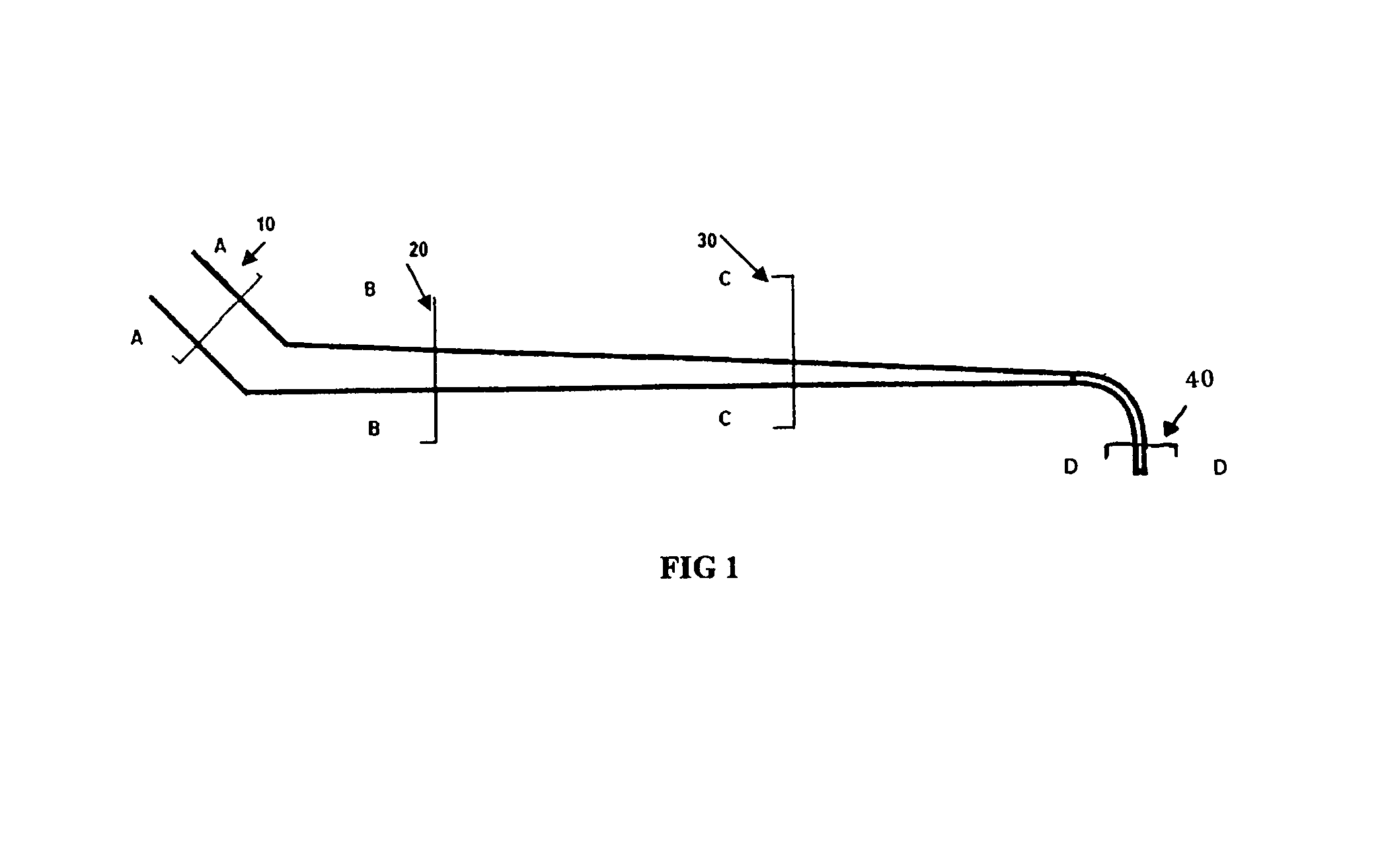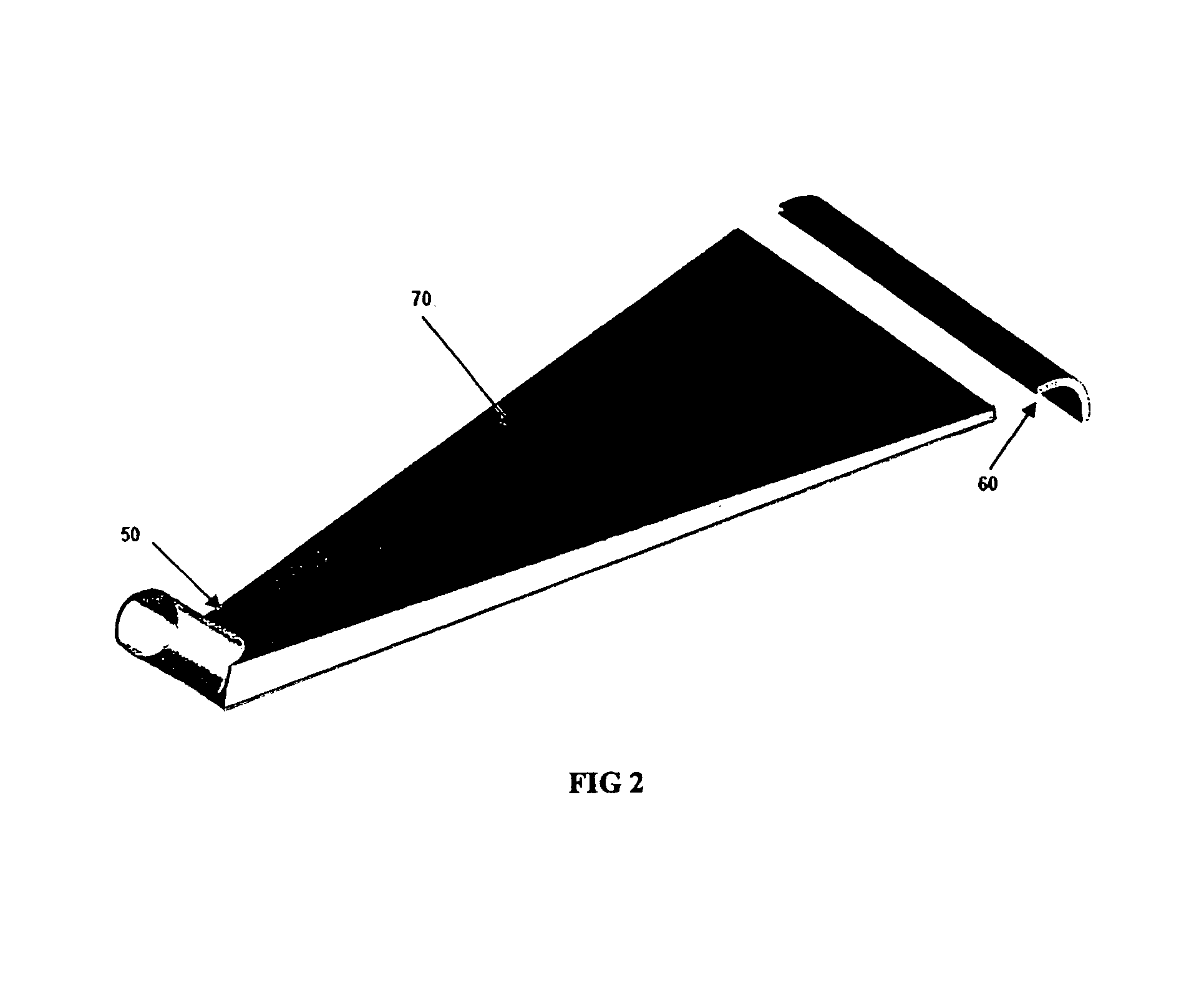Apparatus for the uniform distribution of fibers in an air stream
a fiber and air stream technology, applied in the direction of fibre treatment, coating, lap forming devices, etc., can solve the problems of cumbersome apparatus, unimportant tactile and absorbency properties, and complex mechanical devices, and achieve the effect of simple and effective
- Summary
- Abstract
- Description
- Claims
- Application Information
AI Technical Summary
Benefits of technology
Problems solved by technology
Method used
Image
Examples
Embodiment Construction
[0032]This invention simplifies what has been attempted before in a very elegant aerodynamic execution of a device which not only distributes the fibers uniformly in the cross machine direction, but also allows them to be formed into a web when injected onto a forming zone and can be expanded laterally to accommodate any width of the forming zone.
[0033]The key aerodynamic parameters for conveying solid particles or fibers in an air stream are well known and published in the art. The difficulty has been in developing a forming head that can maintain these conditions continuously and distribute fibers onto a forming zone at the uniformity levels and the forming zone widths desired.
[0034]A forming zone in most air laid machines is a foraminous screen supported over a vacuum box to consolidate the individual fibers into a web after the air is removed. Other types of forming zones are rotary vacuum drums or condensers into which the air is blown into and the fibers are condensed into a w...
PUM
| Property | Measurement | Unit |
|---|---|---|
| angle | aaaaa | aaaaa |
| angle | aaaaa | aaaaa |
| angle | aaaaa | aaaaa |
Abstract
Description
Claims
Application Information
 Login to View More
Login to View More - R&D
- Intellectual Property
- Life Sciences
- Materials
- Tech Scout
- Unparalleled Data Quality
- Higher Quality Content
- 60% Fewer Hallucinations
Browse by: Latest US Patents, China's latest patents, Technical Efficacy Thesaurus, Application Domain, Technology Topic, Popular Technical Reports.
© 2025 PatSnap. All rights reserved.Legal|Privacy policy|Modern Slavery Act Transparency Statement|Sitemap|About US| Contact US: help@patsnap.com



